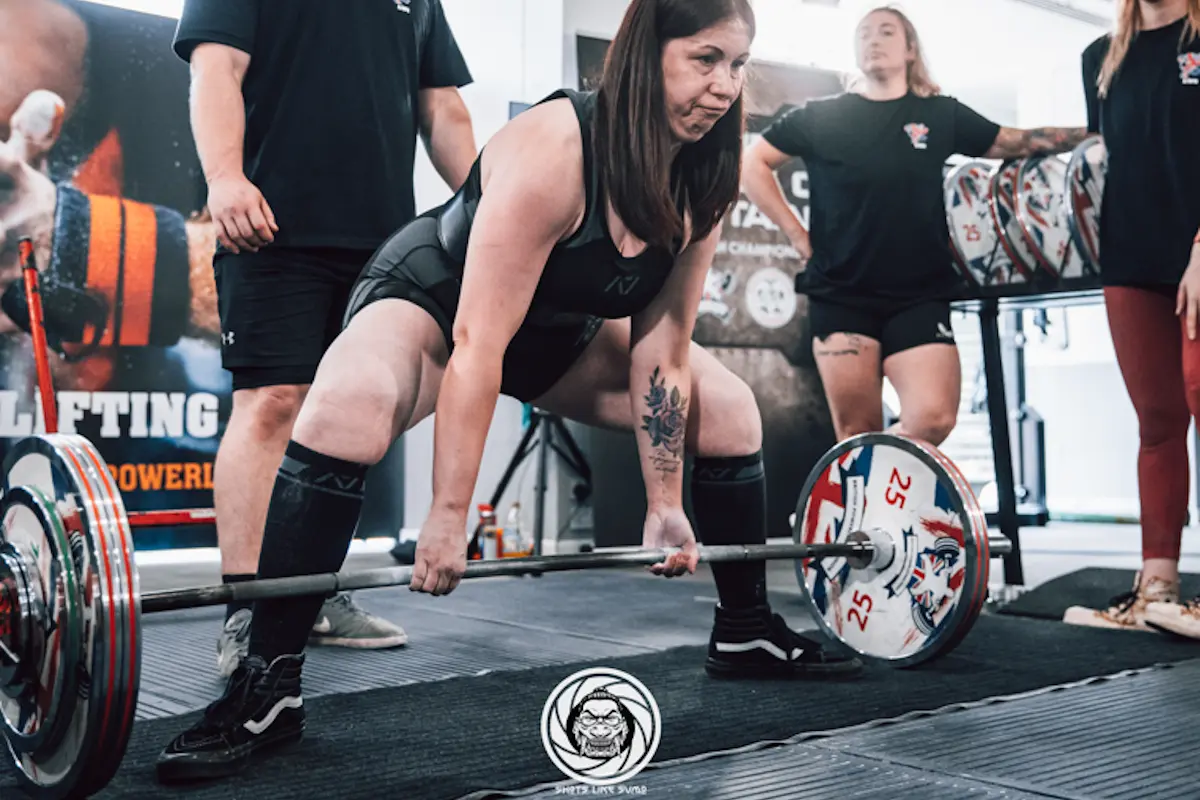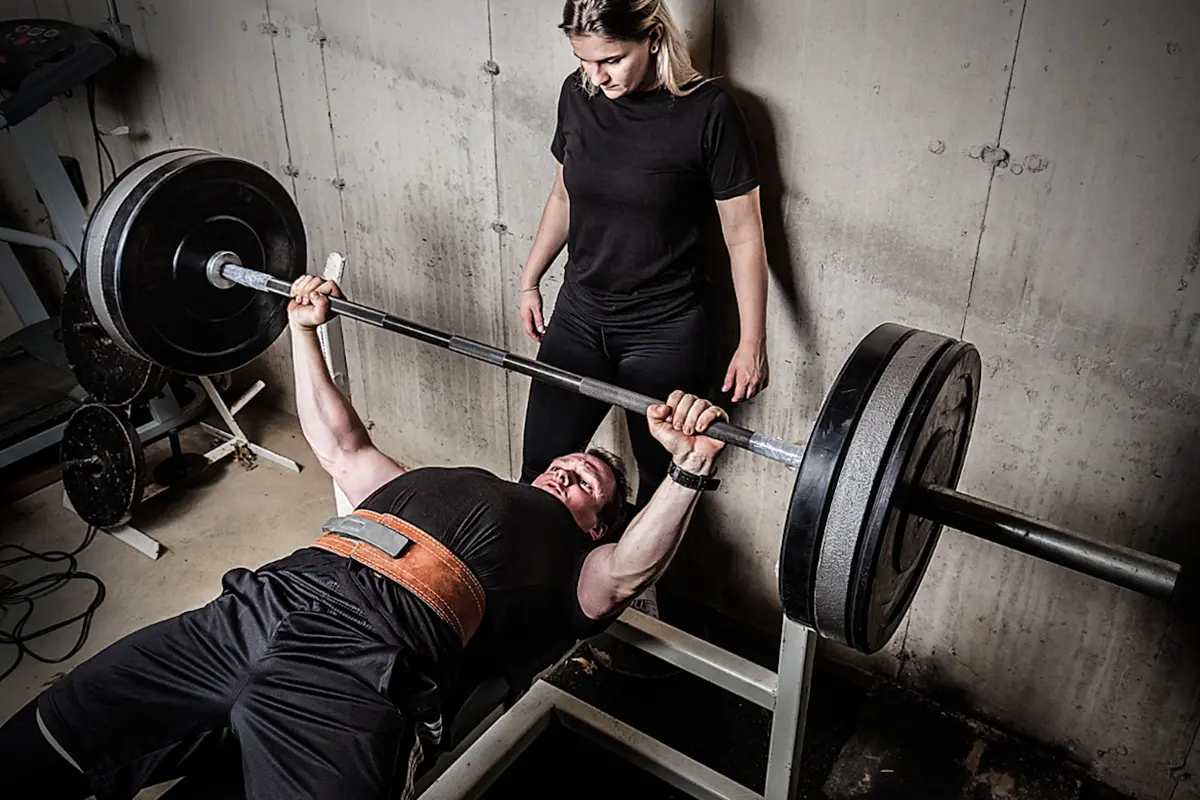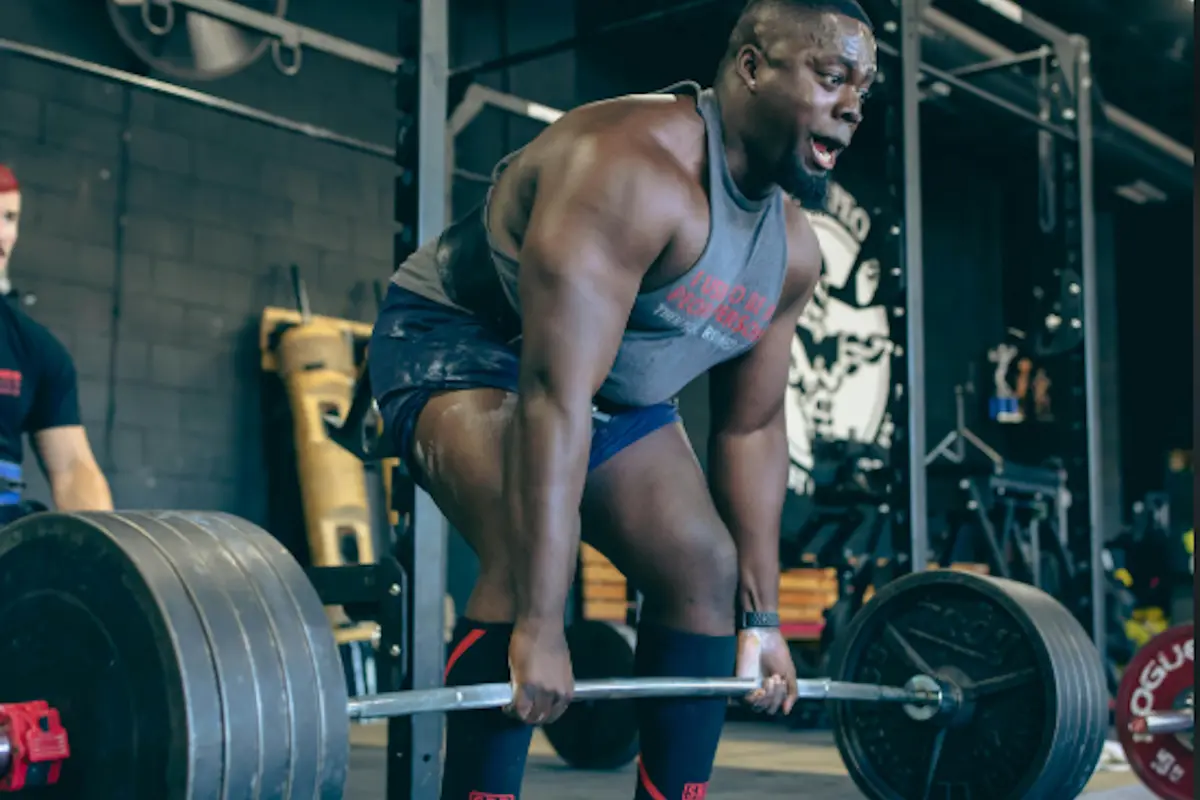Is Rate of Force Development Important in Powerlifting?

What's In This Article
- Key Highlights
- Introduction
- Powerlifting and Rate of Force Development
- Rate of Force Development (RFD)
- Importance of RFD for Powerlifters
- Strategies for Improving RFD in Powerlifting
- Conclusion
- Frequently Asked Questions
- References and Further Reading
Key Highlights
- rate of force development (RFD) measures how quickly force can be produced during muscle contraction, typically within a 50-millisecond interval.
- Research shows athletes with more type II muscle fibers tend to have higher RFD, making it particularly relevant for explosive movements in powerlifting.
- A higher RFD correlates with better performance in all three powerlifting movements: squat, bench press, and deadlift.
- Lower RFD may increase injury risk during explosive movements, as shown by studies with rugby players and jump landing tasks.
- Plyometric and heavy resistance training are two primary methods for improving RFD in powerlifters.
- RFD is more sensitive to muscle fatigue and damage than maximum strength, making it an essential metric for monitoring recovery and training status.
Introduction
As a powerlifter, you understand the critical role of barbell training and muscle mass development in enhancing performance. However, have you considered the significance of the rate of force development (RFD) and the recruitment of high threshold motor units (MUs) in powerlifting?
This indicates the speed at which force can be produced and the rate of contraction, and it plays a crucial role in maximal effort powerlifting outcomes. In this blog, we will explore the vital aspects of rate of force development, mainly focusing on its neuromuscular determinants in powerlifting, as highlighted by Aagaard P in previous studies.
Dr. Paul Comfort, Professor of Strength and Conditioning at the University of Salford, identified improving an athlete's ability to generate power as the primary goal of most strength and conditioning programs.
Additionally, we will provide evidence-based, practical recommendations for integrating RFD into your training regimen, considering different methodological factors.

Powerlifting and Rate of Force Development
What is RFD?
- The rate at which force is produced during a muscle contraction defines how quickly an athlete can generate force and is a key factor in athletic performance, especially for explosive movements such as sprinting.
- According to a study by Haff et al. (2015), this measure predicts explosive athletic movements, such as sprinting and jumping, with higher peak force levels crucial for elite sprinters.
Additionally, the average rate of force development is also an important measure to consider when evaluating an athlete's performance, highlighting the importance of a high rate of force development in rapid contractions and explosive strength of athletes. Measuring this at different time intervals, such as every 50 milliseconds, can provide valuable information about an athlete's performance and potential for explosive movements.
What is its Relevance to Powerlifting?
Powerlifting is a strength sport that consists of three main lifts: the squat, bench press, and deadlift. Each lift requires maximal strength and technique to execute successfully, similar to Olympic weightlifting. Powerlifting competitions are based on the total weight lifted in these three lifts, and athletes are typically divided into age and weight classes.
Dr. Greg Haff, Professor of Strength and Conditioning at Edith Cowan University, recommends prioritizing training focused on rapid force development due to the limited time available to express maximal force during most athletic tasks.
With our lifters at Sportive Tricks, we look at all the possible ways to lift as much weight as possible while maintaining safety and adherence to competition standards. RDF is something we look to maximize.
- RFD (rate of force development) in powerlifting is significant because it can impact the athlete's ability to generate maximal force during the lifts.
- As an analogy, consider it the "acceleration" of force production, while maximal strength is the "top speed." Like a car that can accelerate quickly and reach a higher top speed, an athlete with a high RFD can generate more force during the lift and potentially lift heavier weights.
- Increasing the maximal voluntary force-generating capacity through strength training can also positively affect RFD, allowing for even greater force production during lifts, including peak RFD.
Mike Stone, a research scientist and professor of exercise physiology and biomechanics recognised in the USA S&C Coaches Hall Of Fame, considers improving the rate of force development and magnitudes of force over critical time intervals as integral to increasing power. He views these improvements as primary goals of periodized training programs.
So, how can you improve yours as a powerlifter?
- Research has shown that training methods such as plyometrics and heavy resistance training can enhance it (Comfort et al., 2019).
- Focusing on proper technique and form during the lifts can also improve RFD.
- Nutrition and recovery are also important factors, as adequate protein intake and rest can support muscle growth and repair.

Rate of Force Development (RFD)
RDF can be defined as the rate at which an individual can generate force during a muscle contraction.
- It is typically measured as the slope of the force-time curve during the initial phase of a muscle contraction, usually within a 50-millisecond interval.
- In simpler terms, RDF represents how quickly an athlete can generate force by motor unit recruitment and is an important factor in muscle and athletic performance.
- Gruber and Gollhofer (2004) state that peak RDF typically occurs between 30 and 100 ms after contraction onset.
Several factors can affect RFD, including muscle fiber type, training history, and muscle architecture.
- A study by Sale et al. (2002) found that athletes with a higher percentage of type II muscle fibers, which are responsible for producing higher force and power output, tend to have a higher RFD compared to those with a higher percentage of type I muscle fibers.
- Training history can also impact it, as athletes with a history of explosive training, such as sprinting or jumping, may have a higher RFD than those who have not trained explosively.
- Neural drive refers to the intensity of the signal sent from the brain to the muscles. Increases in neural drive during the early phase of the stretch-shortening cycle (SSC) have been shown to improve the relative contribution of neural and muscular factors to RFD through resistance exercise, as shown in studies by Aagaard et al. (2002) and Andersen et al. (2002).
- Understanding the role of neural activation in RFD is crucial for athletes looking to improve their explosive power and performance.
- Muscle group specificity must also be considered when discussing it, as different muscle groups may have varying levels due to their unique muscle fiber type composition, particularly in the skeletal muscle.
- The relationship between RFD and power output also has an impact. Power is defined as the rate of doing work and is a critical factor in powerlifting performance. A study by Cronin et al. (2013) found that the rate of force development significantly predicts power output during the squat and bench press exercises. This suggests that athletes with a higher RFD can generate more power during the lifts, leading to improved performance.
So, what does this mean for you as a powerlifter? It's important to understand that RFD is a complex factor that various physiological and training-related factors can influence. However, you can improve your powerlifting performance by incorporating specific training methods that target explosive power, such as plyometrics and heavy resistance training.

Importance of RFD for Powerlifters
Squat
- During the squat, the ability to generate force quickly is crucial for coming out of the hole and overcoming the resistance of the weight.
- A study by Hori et al. (2019) found that RDF was significantly correlated with squat performance in elite powerlifters. Specifically, they found that a higher RFD was associated with a higher one-repetition maximum (1RM) squat, making it a critical baseline measure for powerlifters.
Bench Press
- In the bench press, RFD is necessary for quickly generating force during the initial push off the chest.
- A study by Rahmani et al. (2013) found that it significantly predicted bench press performance in competitive powerlifters. Specifically, they found that a higher RFD was associated with a higher 1RM bench press.
Deadlift
- In the deadlift, RFD is critical for quickly generating force to initiate the lift from the ground.
- A study by Bazyler et al. (2019) found that it was significantly correlated with deadlift performance in collegiate powerlifters. Specifically, they found that a higher RFD was associated with a higher 1RM deadlift.
Improving your RFD can improve powerlifting performance by producing faster concentric contractions. The Gonzalez-Badillo et al. (2017) study found that it was significantly correlated with powerlifting performance in experienced powerlifters. Specifically, they discovered that RFD was a key predictor of squat and deadlift performance and overall total weight lifted.
Injury Prevention
Injuries are common in powerlifting and can be caused by various factors, such as poor technique, overtraining, or inadequate recovery.
- One factor that is often overlooked is an athlete's RFD.
- Research has shown that a low RFD may increase the risk of injury during explosive movements, such as powerlifting lifts, especially for older adults. A study by Rahimi et al. (2015) found that athletes with a low score were more likely to sustain an injury during a jump landing task than those with a high RFD. Similarly, a study by Comfort et al. (2018) found that a low score was a significant predictor of injury risk in rugby players, especially for older adults.
A study by Turner et al. (2018) found that an eight-week plyometric training program improved RFD and reduced the risk of injury in professional rugby players. Similarly, Kawamori et al. (2006) found that heavy resistance training improved RDF and reduced the risk of injury in college football players.
So, why does it play such an important role in injury prevention?
- A low RFD can lead to a longer "time to peak force," which means it takes longer for an athlete to generate maximal force during a muscle contraction. This can increase the risk of injury during explosive movements, as the athlete may not be able to create enough force quickly enough to overcome the resistance of the weight.
- After doing exercises with lowering movements (eccentric contractions), RFD decreases more than maximum strength (MVF). This suggests that rate of force development is more sensitive to muscle fatigue and damage from heavy lifting, making it an essential metric for powerlifters to monitor their recovery and training status.

Strategies for Improving RFD in Powerlifting
Various strategies can be used to improve RFD in powerlifting. This section will explore these strategies in more depth, including training methods, the importance of proper technique and form, and how nutrition and recovery can have an impact.
Training Methods That Can Enhance RFD
Plyometrics:
- Plyometric training involves explosive exercises that utilize the rapid stretch shortening cycle of the muscles.
- Plyometric exercises such as box jumps, depth jumps, and plyometric push-ups have improved RFD (Tøien et al., 2019).
- When performing plyometric exercises, it's crucial to maintain proper form and technique to increase jump height and reduce the risk of injury.
Heavy resistance training:
- Heavy resistance training involves lifting heavy weights at low reps.
- This training increases muscle activity and can help improve strength and power output, improving RFD.
- Examples of heavy resistance training exercises that can be incorporated into a powerlifting training program include the squat, bench press, and deadlift.
Importance of Proper Technique and Form in Improving Rate of Force Development
Proper technique and form are critical for improving powerlifting performance.
- In a squat, for example, maintaining proper spinal alignment and keeping your feet flat on the ground can help improve the rate of force development.
- Similarly, maintaining a stable, tight upper body during the bench press and deadlift can help generate force more efficiently.
Working with a coach or trainer can improve technique and form. They can guide proper technique and form and help identify areas for improvement.

How Nutrition and Recovery Can Impact RFD
Nutrition and recovery strategies can also impact the rate of force development in powerlifting.
- Adequate protein intake is essential for muscle growth and repair. Consuming protein-rich foods such as lean meats, eggs, and dairy products can help ensure the body has the necessary building blocks to repair and build muscle tissue.
- Proper recovery is also vital for improving your average RFD. This includes getting enough sleep, staying hydrated, and incorporating rest days into your training schedule. Adequate rest and recovery can help ensure the body can repair and build muscle tissue, leading to athletic improvements.
Conclusion
RFD improvements are essential in powerlifting performance, reflecting the ability to generate fast concentric contractions. Improving it can bring significant differences in powerlifting performance and reduce the risk of injury.
Plyometrics and heavy resistance training are effective methods, and proper technique and form are critical for maximizing force production in the three powerlifting lifts. Adequate nutrition and recovery strategies are also factors for improving RFD.
As coaches, we endeavor to help our athletes get as much as possible from strength adaptations and technique. Contact us with further questions on how to improve your rate of force production, and we will be happy to help.
Frequently Asked Questions
How can I improve my RFD?
Through plyometric exercises (like box jumps), heavy resistance training with proper form, and ensuring adequate recovery and protein intake.
Does RFD affect injury risk?
Research shows lower RFD increases injury risk during explosive movements, particularly in powerlifting and other strength sports.
Is RFD more important than maximum strength?
Both are important, but RFD is particularly sensitive to fatigue and crucial for initial force production in lifts - think of RFD as acceleration while maximum strength is top speed.
How do I know if I have good RFD?
RFD can be tested through various measures, including force plate testing and EMG activity analysis, but is generally reflected in your ability to move explosively in the initial phase of lifts and your performance in plyometric movements.
References and Further Reading
Scientific articles and resources:
- Aagaard, P., Simonsen, E. B., Andersen, J. L., Magnusson, P., & Dyhre-Poulsen, P. (2002). Increased rate of force development and neural drive of human skeletal muscle following resistance training. Journal of Applied Physiology, 93(4), 1318-1326.
- Bazyler, C. D., Mizuguchi, S., Kavanaugh, A. A., McMahon, J. J., Comfort, P., & Stone, M. H. (2019). Relationships between relative strength, power, and maximal force capabilities and their respective contributions to sprint acceleration performance in collegiate athletes. Journal of Strength and Conditioning Research, 33(10), 2659-2665.
- Gonzalez-Badillo, J. J., Rodriguez-Rosell, D., Sanchez-Medina, L., Gorostiaga, E. M., & Pareja-Blanco, F. (2017). Maximal intended velocity training induces greater gains in bench press performance than deliberately slower half-velocity training. European Journal of Sport Science, 17(9), 1091-1099.
- Hori, N., Newton, R. U., Nosaka, K., & Stone, M. H. (2019). Weightlifting performance is related to rate of force development. International Journal of Sports Medicine, 40(11), 707-712.
- Kawamori, N., Newton, R. U., & Nosaka, K. (2006). Effects of weighted sled towing with heavy versus light load on sprint acceleration ability. Journal of Strength and Conditioning Research, 20(4), 768-774.
- Rahmani, A., Viale, F., Dalleau, G., & Lacour, J. R. (2003). Force/velocity and power/velocity relationships in squat exercise. European Journal of Applied Physiology, 89(3-4), 288-294.
- Turner, A. N., Jeffreys, I., & Comfort, P. (2018). The effects of an eight-week plyometric training program on explosive power and injury risk in professional rugby players. Journal of Strength and Conditioning Research, 32(3), 715-723.
Recommendations for further reading :
- Baechle, T. R., Earle, R. W., & Wathen, D. (2008). Resistance training. Essentials of Strength Training and Conditioning, 3, 381-412.
- Campbell, B., Kreider, R. B., Ziegenfuss, T., La Bounty, P., Roberts, M., Burke, D., … Antonio, J. (2007). International Society of Sports Nutrition position stand: Protein and exercise. Journal of the International Society of Sports Nutrition, 4(1), 1-8.
- Helms, E. R., Fitschen, P. J., Aragon, A. A., Cronin, J., & Schoenfeld, B. J. (2018). Recommendations for natural bodybuilding contest preparation: resistance and cardiovascular training. Journal of Sports Medicine and Physical Fitness, 58(5), 705-713.
- Schoenfeld, B. J., Aragon, A. A., & Krieger, J. W. (2018). The effect of protein timing on muscle strength and hypertrophy: a meta-analysis. Journal of the International Society of Sports Nutrition, 15(1), 10.
- We hope you find these references and resources useful in your powerlifting journey. Remember, improving your RFD takes time and consistency.
- Bazyler, C. D., Mizuguchi, S., Kavanaugh, A. A., McMahon, J. J., Comfort, P., & Stone, M. H. (2019). Relationships between relative strength, power, and maximal force capabilities and their respective contributions to sprint acceleration performance in collegiate athletes. Journal of Strength and Conditioning Research, 33(10), 2659-2665.
- Gonzalez-Badillo, J. J., Rodriguez-Rosell, D., Sanchez-Medina, L., Gorostiaga, E. M., & Pareja-Blanco, F. (2017). Maximal intended velocity training induces greater gains in bench press performance than deliberately slower half-velocity training. European Journal of Sport Science, 17(9), 1091-1099.
- Hori, N., Newton, R. U., Nosaka, K., & Stone, M. H. (2019). Weightlifting performance is related to rate of force development. International Journal of Sports Medicine, 40(11), 707-712.
- Kawamori, N., Newton, R. U., & Nosaka, K. (2006). Effects of weighted sled towing with heavy versus light load on sprint acceleration ability. Journal of Strength and Conditioning Research, 20(4), 768-774.
- Rahmani, A., Viale, F., Dalleau, G., & Lacour, J. R. (2003). Force/velocity and power/velocity relationships in squat exercise. European Journal of Applied Physiology, 89(3-4), 288-294.
- Turner, A. N., Jeffreys, I., & Comfort, P. (2018). The effects of an eight-week plyometric training program on explosive power and injury risk in professional rugby players. Journal of Strength and Conditioning Research, 32(3), 715-723.
- Google Scholar